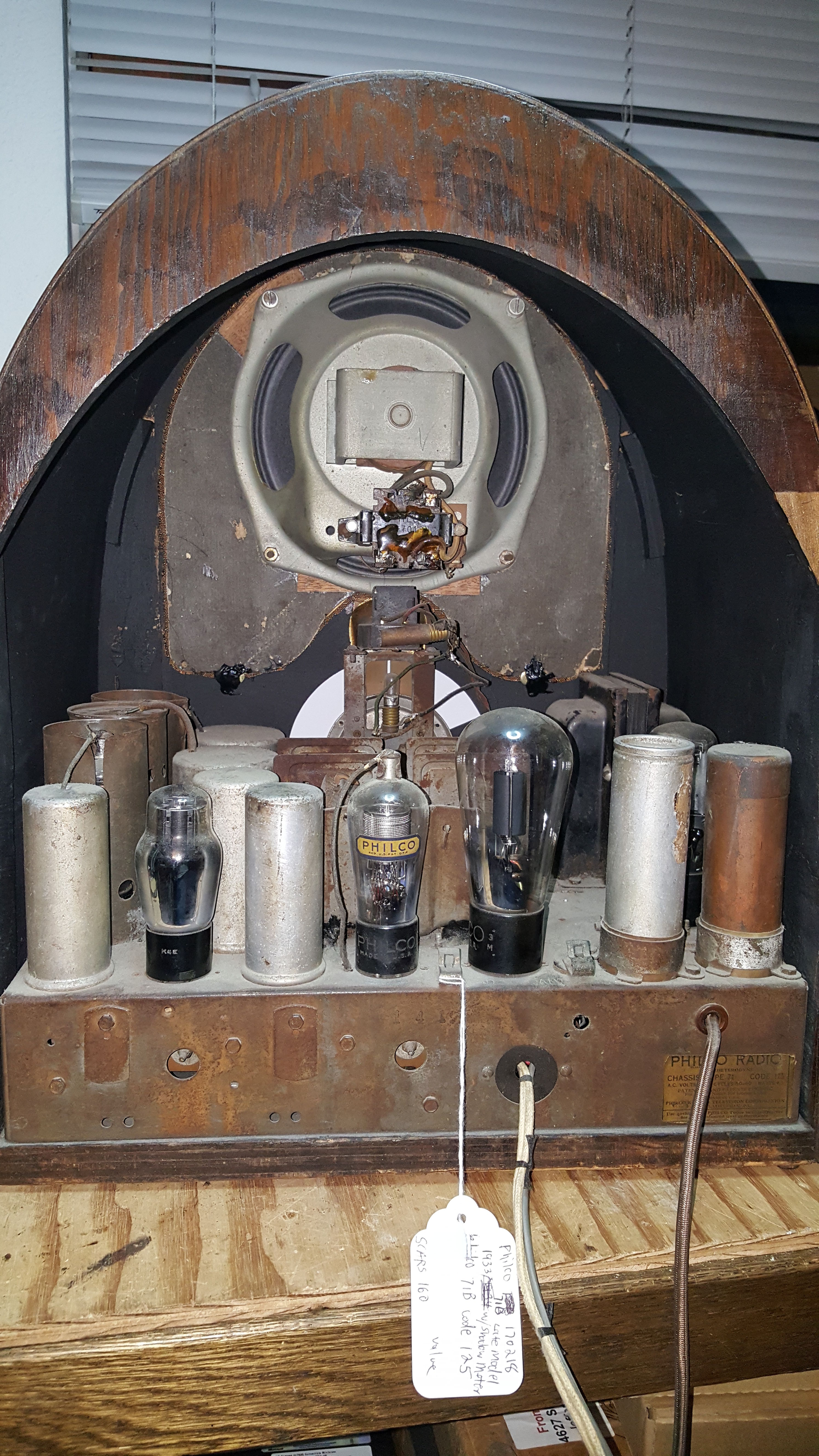05-08-2019, 10:34 PM
I know this is an old thread (I started it the first time I looked at this radio, which I bought in 2017).
Anyway, I know I've talked about this radio elsewhere, and now I realize it should have been on this thread. This is the one with the shadow meter that I had to rewind (my first coil rewind, and I'm happy it works!), the rusted out chassis I had to sand, grind, wire brush and paint, and the tuner assembly I had to replace. (A can of Rustoleum hides a multitude of sin!)
So, I've got it working now, except the audio stage howls, which I suspect is plate to plate interference between the first audio amp (39/44 tube) and power output (42 tube). I can see the feedback on the grid of the 42 and the plate of the 39/44 but not on the grid of the 39/44, so the RF parts look good. Placing my hand between the tubes affects the feedback, and sometimes I really have to mess with it to get it to howl, but even when it's not howling, the audio is distorted, and the scope shows very high peaks in the audio, seemingly at higher frequencies. So, shield, right?
However: This is the newer chassis (Code 125) with individual shields over the RF / IF tubes, and there is no shield around the first audio, and no ring on the chassis where one would go, like you see on the Code 121 chassis. Makes me think Philco decided not to shield the first audio. So, what the heck did they do then?
So, I'm wondering how did Philco deal with feedback on the Code 125? Or was there a different type of shield used that doesn't require the corresponding ring on the chassis? If there was something different underneath the chassis, I'd like to see that also, since mine was far from original when I started, and all I have for reference is a Code 121 chassis, and my wire dress is like that one.
Here is a picture of the radio as I received it.

If anyone has a picture of an original 71 chassis with the individual shields, especially if it doesn't howl, I'd appreciate it.
Anyway, I know I've talked about this radio elsewhere, and now I realize it should have been on this thread. This is the one with the shadow meter that I had to rewind (my first coil rewind, and I'm happy it works!), the rusted out chassis I had to sand, grind, wire brush and paint, and the tuner assembly I had to replace. (A can of Rustoleum hides a multitude of sin!)
So, I've got it working now, except the audio stage howls, which I suspect is plate to plate interference between the first audio amp (39/44 tube) and power output (42 tube). I can see the feedback on the grid of the 42 and the plate of the 39/44 but not on the grid of the 39/44, so the RF parts look good. Placing my hand between the tubes affects the feedback, and sometimes I really have to mess with it to get it to howl, but even when it's not howling, the audio is distorted, and the scope shows very high peaks in the audio, seemingly at higher frequencies. So, shield, right?
However: This is the newer chassis (Code 125) with individual shields over the RF / IF tubes, and there is no shield around the first audio, and no ring on the chassis where one would go, like you see on the Code 121 chassis. Makes me think Philco decided not to shield the first audio. So, what the heck did they do then?
So, I'm wondering how did Philco deal with feedback on the Code 125? Or was there a different type of shield used that doesn't require the corresponding ring on the chassis? If there was something different underneath the chassis, I'd like to see that also, since mine was far from original when I started, and all I have for reference is a Code 121 chassis, and my wire dress is like that one.
Here is a picture of the radio as I received it.
If anyone has a picture of an original 71 chassis with the individual shields, especially if it doesn't howl, I'd appreciate it.
"Why, the tubes alone are worth more than that!" (Heard at every swap meet. Gets me every time!)
Philcos: 90, 70, 71B, 610, 37-61 40-81, 46-420 Code 121 to name a few.
Plus enough Zeniths, Atwater Kents and others to trip over!



![[-] [-]](https://philcoradio.com/phorum/images/bootbb/collapse.png)


